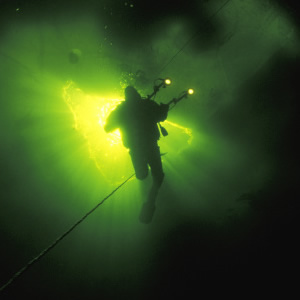Gas Management 101: How to plan the right gas supply for your dive
Posted: May 04 in Dive Blog tagged TecRec by Jan During any dive, running out of gas is the absolute last thing you want to happen. Especially in technical diving, where the diver may be exploring a wreck or cave and can’t ascend directly to the surface, gas management is a crucial part of safe diving and it begins before you even jump in the water. A skilled tech diver diver should always know how much gas will be needed and plan on bringing enough to account for any unexpected contingencies. Here are some of the basics of gas management to keep the air or blended gasses from running out on your dive.
During any dive, running out of gas is the absolute last thing you want to happen. Especially in technical diving, where the diver may be exploring a wreck or cave and can’t ascend directly to the surface, gas management is a crucial part of safe diving and it begins before you even jump in the water. A skilled tech diver diver should always know how much gas will be needed and plan on bringing enough to account for any unexpected contingencies. Here are some of the basics of gas management to keep the air or blended gasses from running out on your dive.
The Rule of Thirds
One of gas management’s most fundamental principles is known as the Rule of Thirds. Quite simple, the rule states that you should plan your gas supply by breaking it up into three parts:
- One-third for moving away from your starting point and entering any kind of overhead environment.
- One-third for your return trip.
- One-third as a reserve, in case of any unforeseen circumstances that require you to stay under longer.
In order to plan your gas requirements for a specific dive, you’ll need to include not only your bottom gas but any decompression or travel gas needed. Once that amount is determined, just increase volume by 50 percent to account for that extra one-third needed as a reserve.
SAC
To calculate how long your gas supply will last at a certain depth, you need to understand a concept called Surface Air Consumption (SAC). This is the amount of gas you consume during each minute at the surface and is used to find the necessary volume of gas for a dive at a specific depth for a specific period of time.
Determining your SAC starts with a basic exercise. First, record the current reading of your submersible pressure gauge (SPG), then swim at a pace that is average to your typical dive at a constant depth for about five to ten minutes, recording how much time has elapsed. After the swim, record the new reading of your SPG—then you will know how much air has been used in terms of bars or psi (pounds per square inch).
Using this information, the rated working pressure of your cylinder and the pressure and time of your planned diving depth, you can calculate the volume of gas you’ll need for any dive. Many handy SAC calculators are available online, but to ensure maximum accuracy, you should ask your TecRec instructor for help in determining gas volume.
Plan Each Step of Your Dive
As SAC can change due to a number of different factors, including equipment used and level of physical fitness, it’s important to re-calculate SAC often to account for any changes in circumstances. It may also be useful to calculate your resting SAC to plan decompression stops and your SAC under exertion to plan for instances of increased activity. These will help you develop a more detailed gas management plan based on your level of exertion at each point in a dive.
Determining SAC and utilizing the Rule of Thirds are the most basic steps in gas management, but you can also take things a step further. Try planning a series of way points during your dive and allot a portion of gas for each segment, then reference the information during your dive to be sure that you’re consuming gas according to your plan. This will ensure that your gas consumption stays on track.
Remember: no amount of detailed calculation and planning will prepare you for a dive without proper training. Especially with technical diving, it’s a must to receive instruction before jumping into the water. Ask your TecRec diving instructor for other strategies for gas management, and as always, dive safely!
